Introduction
In the preceding entries of our Wealth99 series, we've delved deep into the transformative concept of wealth equality and the unfolding revolution of alternative assets. We've highlighted the disruptive forces reshaping our understanding of wealth and investment, and at the heart of this paradigm shift is a technology with far-reaching implications: asset tokenization.
This technological breakthrough is transforming the landscape of investment, democratizing access to high-growth opportunities, and opening doors for the 99% of investors who have traditionally been excluded from these avenues. Tokenization is not merely a new tool in the toolbox of the modern investor; it's an entirely new toolbox, one that promises to level the playing field in an unprecedented manner.
But what makes asset tokenization such a potent tool for wealth creation? How does it transform the complexities of traditional asset handling into a smooth, streamlined, and accessible process? And what are the implications of these changes for the future of investing?
In this comprehensive guide, we will explore the unique benefits that make asset tokenization a game-changing innovation for the 99%. We will journey through the various facets of tokenization, delving into its fundamental concepts, its wide-ranging applications, and its potential to reshape the world of investing as we know it.
1. Liquifying Illiquid Assets
One of the major challenges with traditional assets is their high illiquidity. Assets like real estate, fine art, or private equity often involve complex, drawn-out processes when it comes to selling. The transfer of ownership is often a bureaucratic labyrinth, riddled with paperwork, intermediaries, and considerable waiting times.
Take commercial real estate, for instance. Selling a commercial property is no small feat. It can take up to a year or more to sell such a property. It involves appraisals, inspections, contracts, negotiations, and oftentimes, financing arrangements. For investors who need quick access to their investment, the illiquidity of assets such as commercial real estate can create significant obstacles, potentially leaving them in a financial bind when liquidity is needed most.
Tokenization presents an innovative solution to this issue. At its core, tokenization is about digitizing ownership. It's about taking a physical asset, or an intangible one, and transforming it into a digital token on a blockchain. Each token represents a certain stake in the asset, and these tokens can be bought, sold, or traded on digital exchanges.
When an asset is tokenized, selling your stake becomes a streamlined process. You can trade your tokens on an online exchange, providing you with the flexibility to cash out when needed. This fundamentally changes the dynamics of asset liquidity. Instead of long, drawn-out processes and mounds of paperwork, asset liquidity becomes a matter of a few clicks. It creates a more fluid and versatile investment environment, where investors can maneuver their assets with ease and efficiency.
But the implications of tokenization go beyond mere convenience. By enhancing the liquidity of traditionally illiquid assets, tokenization has the potential to unlock trillions of dollars in global wealth. It's not just about making life easier for investors; it's about redefining what's possible in the world of investment.
2. Establishing Fair Prices
In traditional asset markets, pricing can often be opaque and unbalanced. Assets that are difficult to liquidate often suffer from a lack of established market prices. This forces sellers to offer discounts, which can significantly devalue the asset. Sellers are put in a position where they need to attract buyers with lower prices, which doesn't necessarily reflect the true value of the asset.
Tokenization, by enhancing an asset's liquidity, obviates the need for these discounts. Instead of having to undersell their assets due to illiquidity, sellers can offer their assets at a price that reflects its actual worth. This is a significant shift from traditional practices, where the illiquidity discount has been an unavoidable part of the equation.
For buyers, tokenization also guarantees fair pricing, but it does so in a different way. One of the key features of tokenization is the fractionalization of assets. Instead of having to buy an entire asset, investors can buy smaller shares of an asset. This process significantly lowers the cost barrier to entry, enabling investors to buy into asset classes that were previously beyond their reach.
Think about it in terms of real estate. Traditionally, investing in real estate requires significant capital. You have to buy an entire property, which can amount to hundreds of thousands, if not millions of dollars. But with tokenization, you can buy a fraction of a property. Instead of shelling out a fortune, you can invest a smaller sum and still reap the benefits of real estate investment.
This fractionalization not only democratizes investment, but it also creates a more balanced pricing environment. It enables a wider range of individuals to participate in the market, creating a more diverse and balanced demand. This helps to establish fair prices that reflect the true value of the asset, rather than the restricted demand of traditional markets.
This democratization of investment is a significant stride towards wealth equality. By lowering the cost barrier to entry, tokenization allows more people to participate in high-growth investment opportunities. It creates a more inclusive market, one where wealth creation is not confined to the top 1%, but is accessible to the 99%.
3. Minimizing Management Costs
In the traditional investment landscape, transferring asset ownership is often a cumbersome process. It requires intermediaries to handle the transaction, from paperwork to establishing trust between the buyer and the seller. Intermediaries play a crucial role in facilitating transactions, but their services come at a cost. This cost is often borne by both buyers and sellers, making the transfer process not only time-consuming but also expensive.
Tokenization, however, changes this equation entirely. By leveraging blockchain technology, it brings about a level of decentralization that is unprecedented in the investment world. Blockchain is a decentralized ledger that records transactions across many computers. It eliminates the need for a central authority or intermediary, thereby streamlining the transaction process.
In a tokenized environment, large parts of the transfer process are automated. Smart contracts – self-executing contracts with the terms of the agreement directly written into lines of code – handle the details of the transaction. They define the rules and penalties related to an agreement, just like a traditional contract does, but they also automatically enforce these obligations.
This automation eliminates the need for intermediaries, significantly reducing the costs for both buyers and sellers. Instead of paying hefty fees to intermediaries, parties can directly transact with each other, saving them time and money. This not only makes the transaction process more efficient but also more equitable, as it removes the additional costs that can be a barrier for many potential investors.
4. Shortening Lock-Up Periods
Investors in large and illiquid assets often have to contend with lock-up periods. These are periods during which they are prohibited from selling their assets. The length of these lock-up periods can vary depending on the asset, but they can often last for several months, if not years.
Lock-up periods are designed to stabilize the value of the asset and prevent investors from making impulsive decisions. However, they also restrict the investors' ability to manage their investments. During the lock-up period, investors can't sell their assets, even if they need to access their capital urgently. This lack of flexibility can be a significant drawback for many investors, especially those who need to maintain a certain level of liquidity in their portfolios.
Asset tokenization can significantly reduce these lock-up periods. How? By making the buying and selling process smoother and more efficient. With tokenization, transactions are not constrained by the operational hours of traditional exchanges. Blockchain operates around the clock, allowing transactions to occur anytime, anywhere. This immediacy facilitates faster buying and selling of assets, making the investment environment more fluid and adaptable.
Furthermore, the fractionalization of assets also contributes to shorter lock-up periods. Because assets are divided into smaller, more manageable shares, they can be bought and sold more easily. Investors aren't tied to large, indivisible assets, but instead have the flexibility to sell fractions of their assets as needed. This flexibility empowers investors to better manage their portfolios, providing them with greater control over their investments.
5. Enhancing Transparency
Transparency is a key component of a healthy and fair investment ecosystem. It allows investors to make informed decisions and holds issuers accountable. In traditional markets, achieving a high level of transparency can be challenging. Information can be difficult to access, and the authenticity of records can be hard to verify.
Tokenization, however, enhances transparency in several ways. First and foremost, it leverages the power of blockchain technology. Each transaction on the blockchain is recorded on a decentralized ledger that is maintained by multiple nodes (computers participating in the blockchain network). These records are immutable, meaning they cannot be altered or deleted. This ensures that the asset histories are accurate and tamper-proof, enhancing the trustworthiness of the information.
In a tokenized asset environment, every transaction relating to an asset – from its issuance to its various ownership transfers – is recorded on the blockchain. This provides a clear and comprehensive record of the asset's history, making the investment process more transparent. Potential buyers can review these records to verify the authenticity of the asset and make more informed decisions.
Moreover, the real-time nature of blockchain records ensures that investors have access to up-to-date information at all times. In traditional markets, there is often a time lag in the reporting and updating of information. However, with blockchain, transactions are recorded as they happen, providing real-time access to data.
This increased transparency not only empowers investors but also holds issuers accountable. With every transaction being recorded on a public ledger, issuers are less likely to engage in fraudulent activities, knowing that their actions are being monitored and recorded.
6. Ensuring Secure Identity Verification
With the increasing number of financial transactions taking place online, the need for secure identity verification has never been more crucial. Cybersecurity threats, identity theft, and financial fraud are significant concerns in the digital age.
The security of blockchain technology ensures robust verification of ownership and decentralized identity (DID) details. In a tokenized system, each user is associated with a unique pair of keys – a private key and a public key. The private key is kept secret and is used to sign transactions, while the public key is shared with everyone and is used to verify the signatures.
The user's private-public key pair forms a digital signature that can be used for Know Your Customer (KYC) and Anti-Money Laundering (AML) verification. This provides a secure and reliable method for identity verification. It reduces the risk of fraudulent activities and builds trust within the ecosystem.
Moreover, because each transaction on the blockchain is linked to a unique digital signature, it creates an immutable record of all activities associated with a specific identity. This can aid in regulatory compliance and law enforcement, further enhancing the security of the investment ecosystem.
7. Expanding the Investor Base
Fractionalization, one of the key benefits of tokenization, doesn't just lower the cost barrier to entry, it also broadens the investor base. By breaking down large assets into smaller shares, it allows more investors to participate in the investment process.
In traditional markets, many high-value assets are out of reach for the majority of investors due to their high price points. However, by fractionalizing these assets, tokenization dismantles these prohibitive prices. This enables more investors to diversify their portfolios into asset classes that were previously inaccessible to them.
The result is a significant shift towards democratizing investment opportunities. With tokenization, high-growth investment opportunities are no longer the exclusive domain of the wealthy few. Instead, they are made accessible to a wider range of individuals, including retail investors, small-scale investors, and even those who are new to investing.
Moreover, the digital nature of tokenized assets also means that they can be easily traded on online exchanges, further enhancing their accessibility. Investors are not bound by geographical limitations and can participate in the global investment market from the comfort of their own homes.
This expansion of the investor base is a crucial step towards wealth equality. It enables more people to participate in high-growth investment opportunities, which could potentially lead to a more equitable distribution of wealth.
8. Widening Geographic Reach
Blockchain technology, the backbone of tokenization, is inherently global. It operates on the internet, free from geographical boundaries. This means that investors are no longer confined to opportunities within their own countries or local areas.
With tokenization, anyone, anywhere in the world, can invest in any asset. This breaks down geographical barriers and democratizes access to global investment opportunities. Investors from developing countries can invest in assets in developed markets, and vice versa. This global reach not only provides investors with a wider range of opportunities but also allows for greater portfolio diversification, reducing investment risk.
Moreover, tokenization also opens up new markets for asset issuers. In a tokenized environment, issuers can reach a global audience, attracting investments from around the world. This can increase the liquidity of their assets and potentially lead to more favorable market valuations.
This widening of geographic reach is not just beneficial for individual investors and issuers; it also has broader implications for global financial inclusion. It enables individuals from different parts of the world to participate in the global economy, fostering economic growth and development.
9. Speeding up Settlement Times
In traditional markets, the settlement of transactions can take several days. This is due to the various processes involved, such as the verification of transaction details, the transfer of assets, and the updating of records. These processes are often manual and require the coordination of multiple parties, resulting in delays.
Tokenization, however, can significantly reduce transaction times and enable round-the-clock trading. This is achieved through the use of smart contracts, which automatically execute transactions when predefined parameters are met.
Smart contracts are self-executing contracts with the terms of the agreement directly written into lines of code. They automatically process transactions without the need for manual intervention, speeding up the settlement process. This real-time settlement of transactions not only enhances the efficiency of the market but also allows investors to capitalize on opportunities in real-time.
Moreover, because blockchain operates 24/7, tokenized assets can be traded round the clock. This is a significant advantage over traditional exchanges, which are bound by operational hours. With tokenization, investors can respond to market changes immediately, regardless of the time or day.
10. Modernizing Infrastructure
Many asset classes still rely on the exchange of paper-based documents for fundraising and trading. This process can be cumbersome, prone to errors, and inefficient.
By digitizing these assets on a Distributed Ledger Technology (DLT) infrastructure, tokenization leads to a more efficient and streamlined process. DLT, of which blockchain is a type, is a decentralized database that is managed by multiple participants. It ensures that all participants have access to the same information and that any changes to the data are reflected in real-time across all copies of the database.
In a tokenized environment, assets are represented as digital tokens on the blockchain. All transactions related to these assets are recorded on the blockchain, eliminating the need for paper-based documents. This digital transformation reduces the risk of errors, saves time, and increases the overall efficiency of the investment process.
Furthermore, the use of DLT also provides a secure and tamper-proof infrastructure for asset management. It ensures that transaction records are immutable and that all parties have access to accurate and up-to-date information. This not only enhances the integrity of the investment process but also builds trust among investors.
11. Reducing Reconciliation Costs in Securities Trading
In traditional securities trading, reconciliation is a crucial process. It involves verifying that the details of transactions match across all parties involved. This process can be time-consuming and costly, as it requires manual effort and often leads to errors.
Blockchain technology, however, acts as a digital ledger where each shareholder position is recorded. This technology streamlines – or even eliminates – a significant amount of administrative work. From profit sharing to voting rights distribution and buy-backs, blockchain simplifies these processes and creates a secondary market.
As the market begins to accept the digital ledger as the 'golden copy' of data, reconciliation becomes redundant. Everyone will simply refer to the blockchain for records, leading to reduced costs and increased operational efficiency. This not only reduces the administrative burden on businesses but also improves the accuracy of record-keeping, minimizing the potential for disputes.
12. Advancing Regulatory Standards
The immutability and real-time nature of data held on the blockchain increases transparency and investor protection in the financial industry. These qualities of blockchain technology can help in advancing regulatory standards.
For regulators, blockchain's transparent and tamper-proof nature can provide a valuable tool for ensuring compliance and detecting fraud. All transactions are recorded on the blockchain in real-time, providing regulators with access to up-to-date and accurate information. This can help regulators in monitoring the financial market more effectively and in identifying potential issues before they escalate.
Moreover, the use of smart contracts in tokenized assets can also facilitate regulatory compliance. The terms of the agreement, including any regulatory requirements, can be programmed into the smart contract. This ensures that transactions are automatically executed in compliance with the regulations, reducing the potential for violations.
This advancement in regulatory standards not only enhances the integrity of the financial market but also builds investor trust. Knowing that transactions are being monitored and regulated can give investors confidence in the fairness and safety of the market.
Concluding Thoughts
The tokenization of assets represents a fundamental shift in how we view and interact with the financial market. It democratizes access to investment opportunities, enhances transparency, improves efficiency, and advances regulatory standards.
While the technology is still in its early stages, its potential is undeniable. As more and more assets are tokenized, we can expect to see a profound transformation in the investment landscape. The future of finance is digital, and tokenization is a key part of that future.
However, it's important to note that this technology, like any other, comes with its own set of challenges. Issues such as regulatory uncertainty, technological complexity, and market adoption are still hurdles that need to be overcome.
Yet, as we continue to innovate and adapt, these challenges can serve as stepping stones towards a more inclusive and efficient financial ecosystem. With tokenization, the future of finance looks promising.
The transformation brought about by asset tokenization has already begun, and it will continue to reshape the financial world in the years to come. It's an exciting time to be a part of this revolution. So whether you're an investor, an issuer, or just a curious observer, it's worth keeping an eye on this growing trend.
Stay tuned for more updates on the world of asset tokenization and blockchain technology as we continue to explore the potential of this exciting new frontier in finance.
Unlocking the Future of Investing: The Power of Asset Tokenization
By Vicky Barker 24.01.23
How to Invest
18 MIN READ

By Vicky Barker 24.01.23
Related Articles
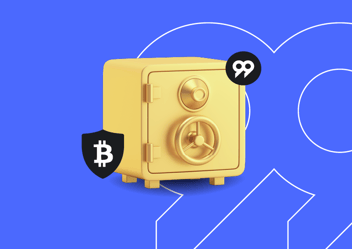
BitGo: A Secure Custody Solution for Digital Assets
The Importance of Asset Security

The Advantages of Incorporating Cryptocurrency into a SSAS Pension
As the world embraces digital assets, incorporating cryptocurrency into a Small Self-Administered Scheme (SSAS) pension...

Wealth99 Integrates with Zepto for Instant Payments in Australia
Today, we're excited to announce our partnership with Zepto - a leading payments provider. This update allows our...






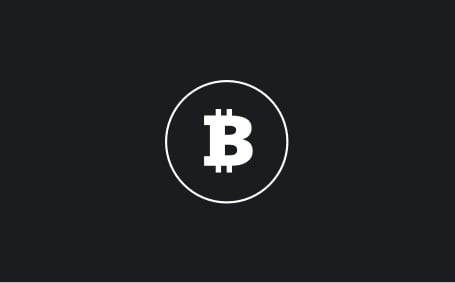
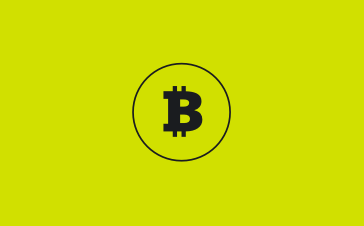



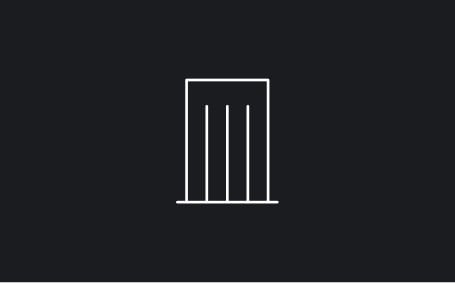





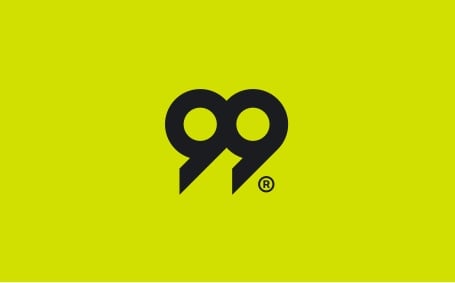


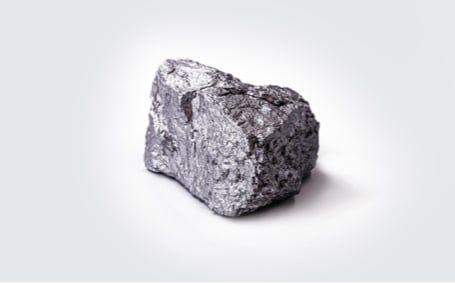
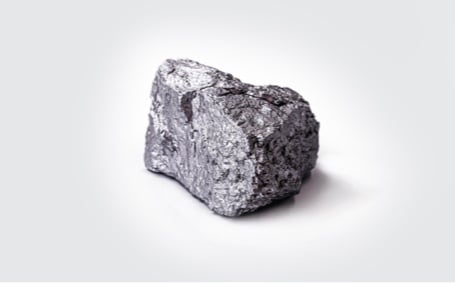


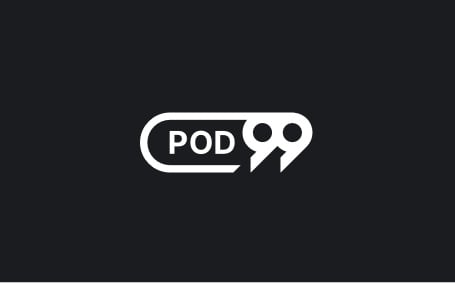








.svg)
.svg)
.svg)
